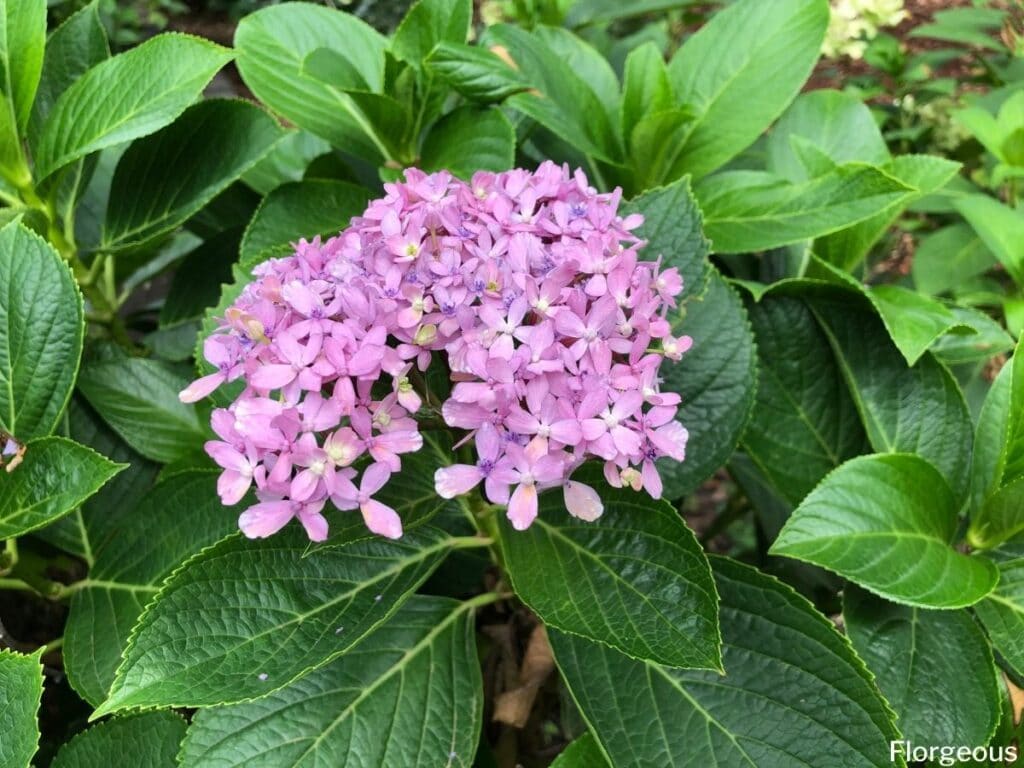If you are looking for a reliable ornamental plant that has a lot to offer, then you should consider including hydrangeas in your garden. You can use them as shrub borders, in a mixed planting with other perennial flowering plants, or planted individually in pots or containers.
Hydrangeas are one of the showiest flowering plants that are readily available worldwide. A gardener’s favorite for decades, these shrubs produce colorful flowers that bloom in the summer and fall.
Common Hydrangea Types
Hydrangeas or scientifically referred to as Hydrangea spp. is an extensive genus of erect or climbing woody flowering shrubs under the Hydrangeaceae botanical family. They originated from Eastern and Southern Asia as well as portions of the Western Hemisphere.
The genus has nearly 75 species of shrubs or small trees. Among these are some recognized species that are commonly grown in gardens, including:
- Hydrangea arborescens (wild or smooth hydrangea)
- Hydrangea cinerea (ashy hydrangea)
- Hydrangea macrophylla (bigleaf or French hydrangea)
- Hydrangea paniculata (panicle hydrangea or hydrangea tree)
- Hydrangea quercifolia (oakleaf hydrangea)
- Hydrangea radiata (silver leaf hydrangea).
- Hydrangea serrata (mountain hydrangea)
- Hydrangea petiolaris (climbing hydrangea)
Hydrangea flowers traditionally come in white, but more color options such as pink, blue, purple, and red are available today.
Hydrangea Plant Name and Origin
One common name of hydrangea that you might hear is hortensia, however, it is the genus name that is truly well-fitting.
The genus name Hydrangea originates from the Greek words ‘hydro’ and ‘angeion’, meaning “water” and “vessel,” respectively. Although the name technically refers to the shape of the plant’s seed pods, it couldn’t possibly be more fitting – hydrangeas require lots of water!
Hydrangea plants should never be allowed to dry out. Hence, the soil conditions must be kept moist at all times.
Hydrangea Shrub Description
Hydrangeas are deciduous woody shrubs, climbers, or small trees that range in size from four to twelve feet tall, depending on the variety and cultivar. The blooms vary in color but can be white, lime green, purple, blue, or pink. Generally, the hydrangeas’ growth rate is relatively fast.
Flowering typically commences in the early spring and lasts until late autumn. Individual flowers are small but appear in prominent clusters at the ends of the stems. A modified bract surrounds each flower.
Hydrangea flower clusters are of three types: mophead, panicle, and lacecap. Mophead hydrangeas contain flower clusters that are globe-shaped. Flower clusters that are long and resemble cone shapes are panicle hydrangeas, while flat ones are generally considered lacecap hydrangeas.
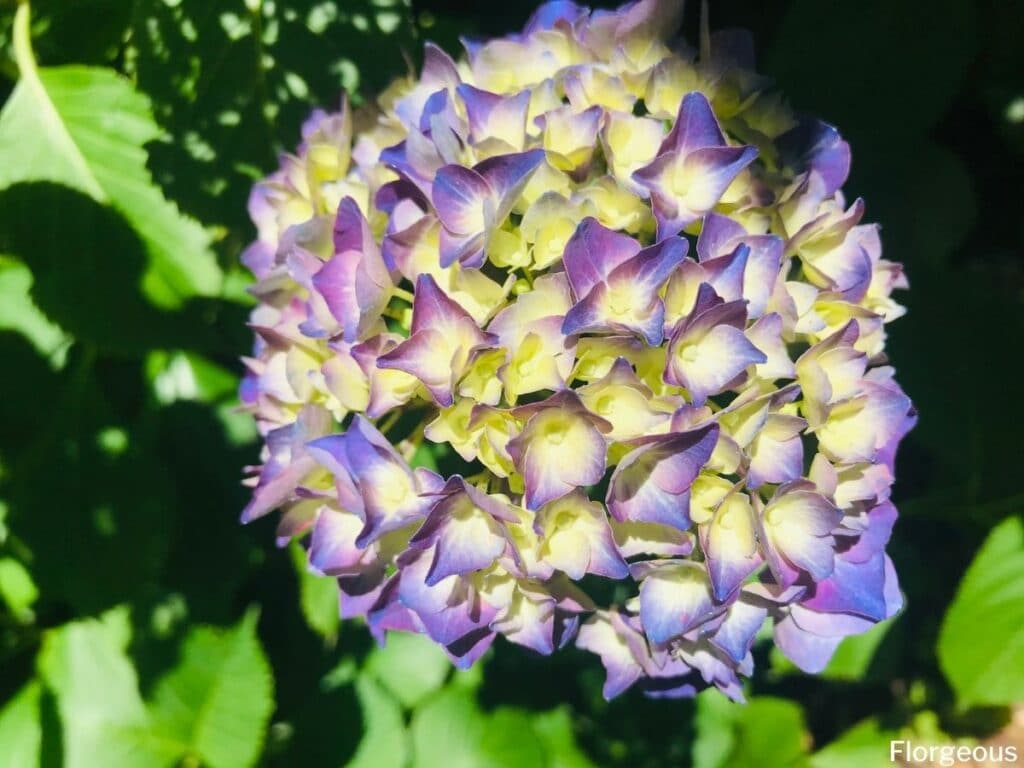
Growing Hydrangeas
Are you ready to start growing hydrangea bushes in your backyard garden? If so, you’ll want to consider these tips on how to grow hydrangeas:
How to Plant Hydrangea
Hydrangeas thrive in fertile, moist, well-draining soils. Other than that, they aren’t picky. Choose a location with these conditions and is in partial sunlight.
Although you could technically grow hydrangea from seed, the far easier method will be to transplant a shrub that has already been started. You will purchase your plant in a container at a nursery.
When to Plant Hydrangeas
Plant your shrub in the spring after the last frost or in the early fall before the first fall frost. The goal here is to plant before or after the heat of summer begins to take a toll on the garden.
Dig a hole that is roughly as deep as the root ball of the plant and about two to three times as wide. If you’re planting multiple hydrangeas, space them at least three but up to ten feet apart (this depends on the variety you are growing and how much air circulation you’d like between your plants).
Place your plant in the hole and fill it half full with soil and compost. Water, doing so deeply until the soil settles. Then, fill in the remainder of the planting hole with soil before watering thoroughly once more. It is a good idea to mulch after planting, too, as this can help suppress weeds and retain soil moisture.
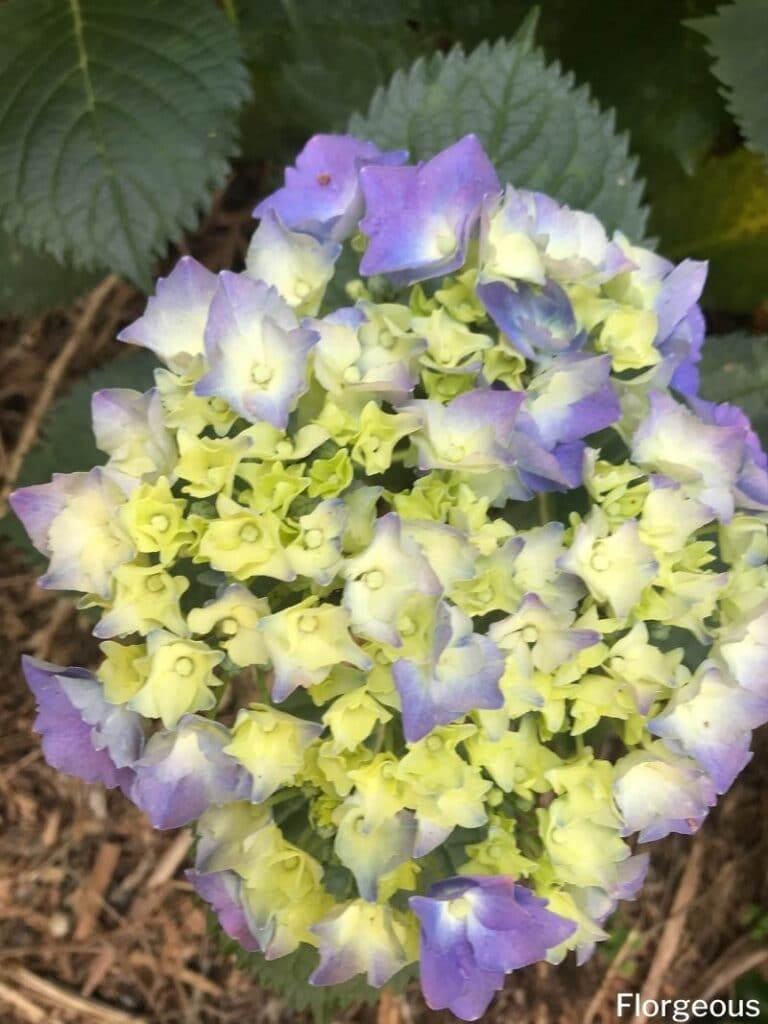
How to Propagate Hydrangea
If you want to propagate hydrangeas on your own, don’t worry – it is easy to do so from cuttings. Start by selecting a piece of stem that is good for cutting. If you’re taking cuttings in the fall, you should choose one that is at least six inches long and has no flowers. It should ideally be new growth, too. This will be a paler green than the rest of the stems on the plant.
Take a sharp pair of kitchen shears and trim the stem right below a leaf node (this is where a set of leaves meet and are growing) Your cutting should be a minimum of four inches long and have an additional leaf pair above the node. Clip your cutting then strip all but the upper set of leaves. It should have only two leaves left. Cut these in half crosswise.
Though not absolutely necessary, if you have access to rooting hormone, it’s a great idea to dip the end of your cutting in this product. This will increase the likelihood that your cutting roots successfully. Put your cutting into damp potting soil, leaving just an inch or so exposed. Cover the container with a plastic bag, ensuring that the bag itself doesn’t touch the hydrangea’s leaves.
Put the container in a sheltered spot, ideally one that is relatively warm but out of direct sunlight. Check on your cutting each day to make sure the soil is still damp. If it has dried out, just mist it lightly. In less than four weeks, your cutting should root and the process of propagation will be complete – you can now transplant hydrangea cutting into a new container.
That’s all there is to it!
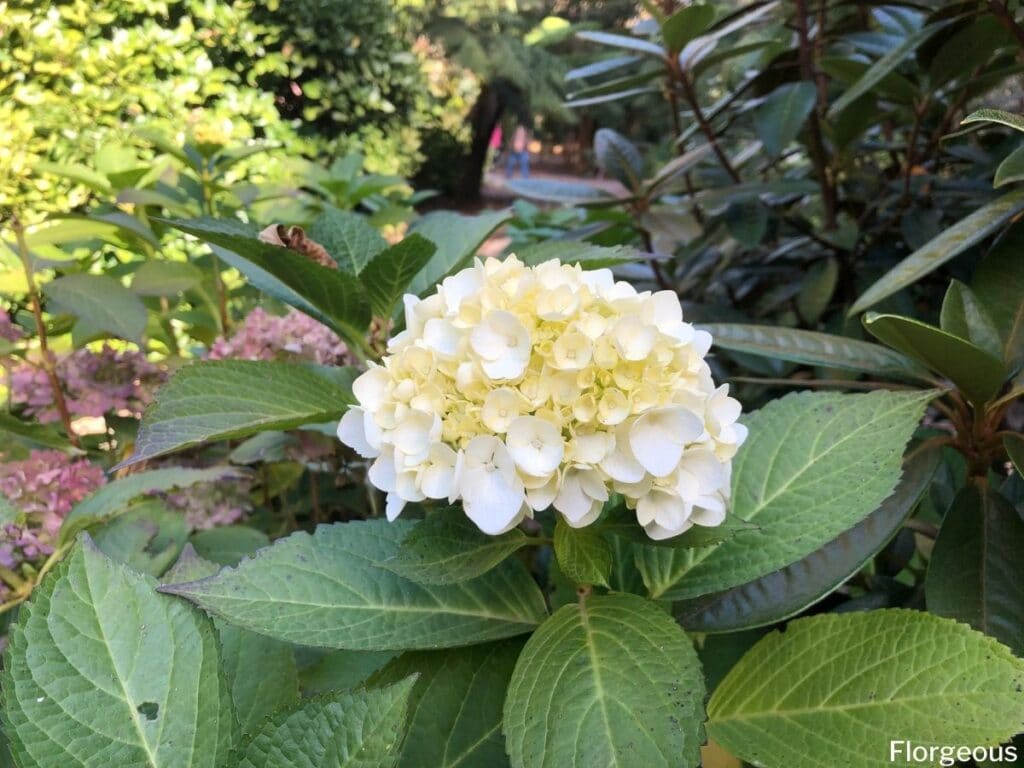
How to Care For Hydrangeas
Here are some important hydrangea care tips to follow:
Sunlight
Each plant will require six to eight hours of full sun exposure to ensure that your blooms are happy, vibrant, and abundant. These plants are shade tolerant, but too much exposure to heavy shade can result in lesser or no flowering at all.
Ideally, you should grow hydrangeas in a location that receives full sunlight in the morning with a bit of dappled or afternoon shade to protect vulnerable blossoms from the hot midday sun.
Watering
One of the known characteristics of hydrangeas is that these plants love water. Optimum performance can be achieved if the plants are given adequate water supply, especially during hot and dry weather conditions.
Generally, these shrubs require an inch of water, applied deeply and thoroughly, about once per week. You may have to provide up to two inches per week when the weather’s hot and dry – this will keep them from wilting.
If allowed to dry out, hydrangeas may produce fewer flowers the following season – or they may not fully recover at all. Avoid directly watering the leaves as much as possible to minimize diseases such as leaf spot disease.
Soil
Regardless of the variety, hydrangea soil should be well-drained, moist, and fertile as these plants do not thrive well in drought.
Interestingly, the colors of hydrangea blooms are influenced by the presence of aluminum ions in the soil. The flower color changes depending on the soil pH level where they are planted since hydrangeas are one of the few flowering perennial plants that accumulate aluminum.
It is important to note that hydrangeas prefer acidic soil conditions with a lower soil pH (ideally 4 to 5) to produce blue blooms since aluminum is present in such soil. On the other hand, a more alkaline soil (soil pH of 6 to 7) would give pink flowers.
As discussed above, the colors of some hydrangea varieties may change depending on the soil pH. Hence, gardeners can modify the soil condition by introducing aluminum sulfate or sulfur to reduce the soil pH.
However, hydrangeas may develop an iron deficiency if the soil PH is too high. In such cases, the plants would exhibit yellowing in younger leaves.
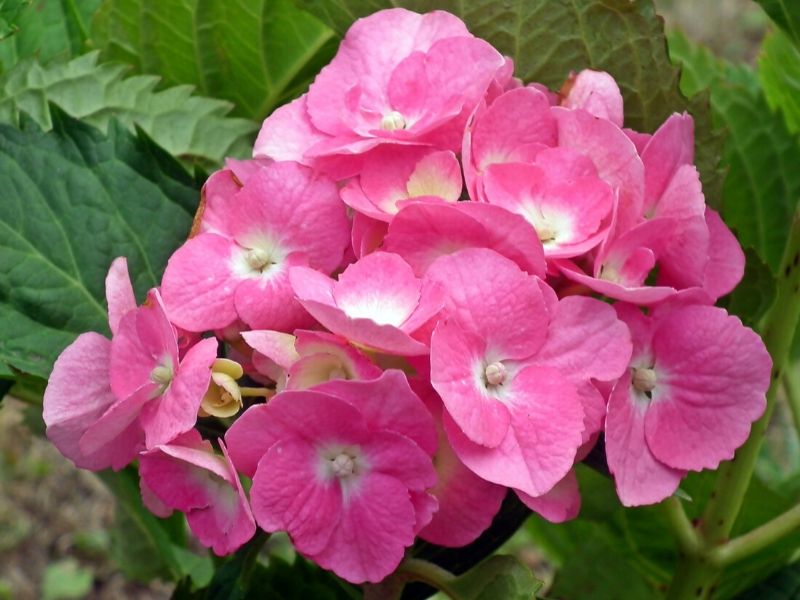
Fertilizer
Are you curious about how to fertilize hydrangeas? Fortunately, this, too, is relatively straightforward.
The easiest way to fertilize is by using a general purpose 12-4-8 formulation, though a more balanced 10-10-10 (equal parts nitrogen, phosphorus, and potassium) will work too. You can use a chemical formulation or an organic fertilizer like compost – whichever you prefer.
Fertilize once per year, using a slow-release formula (compost and peat moss are also naturally slow-release). If you notice that your plant’s leaves are looking dry or scorched, that’s a sign that you are over-fertilizing. Ease up until your plant recovers.
To fertilize, spread around the drip line of the branches, not directly at the base. This can prevent burning your plants. Water deeply after fertilizing and if you choose a slow-release formula, be sure to cover it with soil after you apply. This will help the fertilizer be activated.
That’s all you need to fertilize, although it can also be a good idea to use things like liquid iron supplements to help keep your plant’s leaves a healthy-looking green.

How to Prune Hydrangeas
Pruning hydrangeas will depend somewhat on what type of plants you are growing. Some types (like bigleaf and oakleaf hydrangeas) bloom on old wood and should only be pruned after flowering, while others bloom on new growth and should be pruned before they wake up in the spring (or as they’re going dormant in the fall).
In most cases, though, it’s safe to snip off any spent blooms or to remove scraggly-looking canes at the soil line. Do this in the spring to maintain a healthy-looking plant. You can remove old canes to ensure larger blooms, too.
If you want to prevent your hydrangea bush from flopping, leave a framework of old-growth. Cut the stems to 18-24 inches, which will help support new growth as it appears.
No matter which pruning hydrangeas techniques you rely on, remember to always use sharp, sanitized shears to prevent spreading diseases among your hydrangeas.
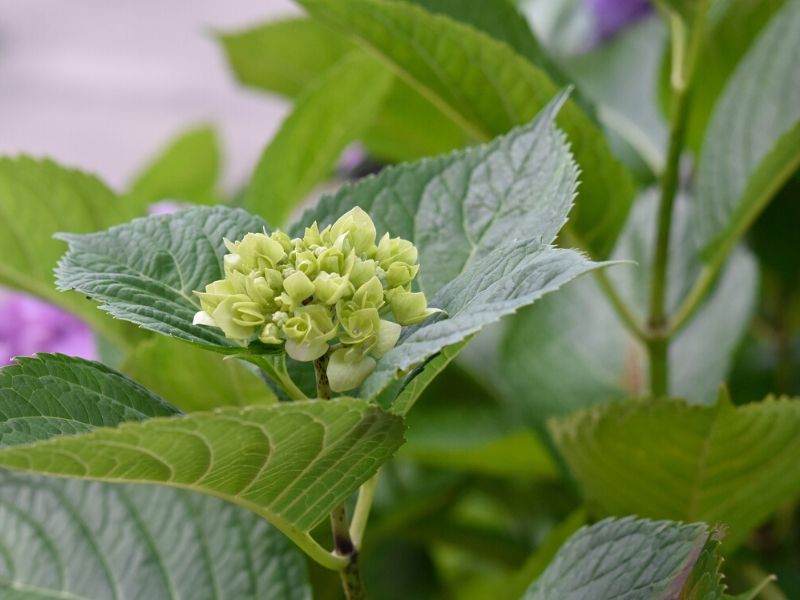
How to Deadhead Hydrangeas
Deadheading hydrangeas is a great way to ensure that your fading or browning shrubs become more vibrant. When you deadhead, you won’t harm your plants but will instead just be removing spent blooms to encourage flowering shrubs to stop producing seeds and to put their energy toward the development of foliage and roots.
It will make your plants stronger and healthier! To do it, you’ll just need a set of pruners. You can do this throughout the growing season to encourage fresh growth. Avoid doing it in the mid to late fall and winter, though, allowing any spent blooms to remain in place. This will help your shrub look attractive during the winter while also leaving in place buds that could potentially become new flowers next spring.

Pests and Diseases
Hydrangeas are susceptible to several fungal diseases, including but not limited to powdery mildew, Cercospora leaf spot, and anthracnose. Such conditions can be prevented by removing any fallen leaves. Also recommended is the use of drip irrigation or soaker hoses for watering the plants. The use of pesticides is another option.
Other diseases that can affect these plants are Botrytis blight, root rot, blister rust, and bacterial wilt.
Likewise, insect pests like aphids, black vine weevil, four-lined plant bug, Hydrangea leaf tiers, Japanese beetles, Rose chafers, and two-spotted spider mites can infest hydrangea plants and cause damage.
Toxicity
Growing hydrangeas could come with a price. Although not as toxic as other poisonous plants, these shrubs could result in diarrhea, vomiting, abdominal pains, or gastroenteritis in humans or animals when ingested in large amounts.
The flower buds and leaves of these plants, in particular, contain glycoside amygdalin. This chemical compound breaks down to produce cyanide once metabolized. Exposure to hydrangeas could also cause dermatitis or skin irritation in sensitive individuals (9).
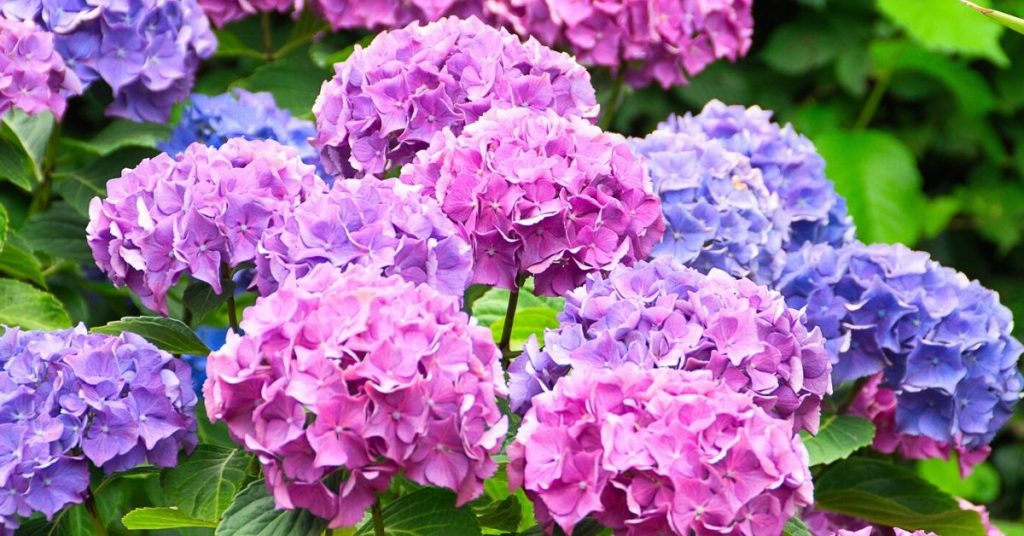
Why Won’t My Hydrangea Flower?
This is a common question people often ask when it comes to growing hydrangeas. Failure to flower is a common cultivation problem encountered by many. Several factors may affect this issue.
But usually, it is a result of a winter injury to the flower buds or too much exposure to dense shade. Improper pruning can also lead to flowering failure.
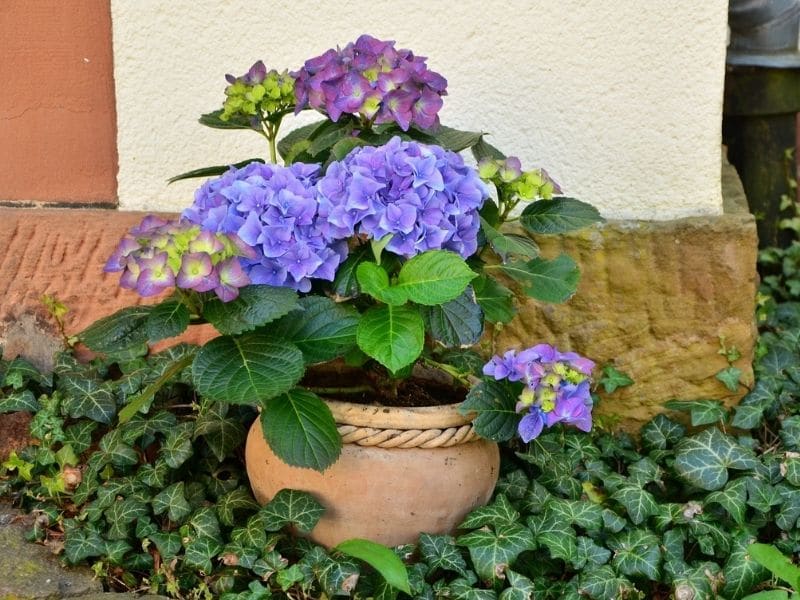
Caring for Potted Hydrangeas
You can even grow hydrangeas in pots! Ideally, your container should be placed in a location that will receive full morning sunlight and a bit of afternoon shade, just as if you were growing your plant directly in the ground.
Before planting your shrub in the container, add a bit of organic matter, like peat moss, to the potting soil. This will improve fertility and add a bit of acidity, which potted hydrangea prefers.
Once planted, you can fertilize your shrubs with a water-soluble fertilizer like a 20-20-20 about once per month (follow the instructions on the label). Water often, as containers tend to leach both water and nutrients far faster than plants growing directly in the ground. Water frequently enough so that the roots remain moist without staying consistently wet – too much moisture in a container can lead to disease issues.
Prune regularly after flowering, removing faded blossoms to encourage fresh growth. You can bring your hydrangea shrub inside during the winter months or let it remain outside year-round, depending on your growing zone and preferences. The choice is yours!

Hydrangeas Uses
Hydrangeas are one of the most versatile garden plants such that they can play various roles in any garden. They work well in borders, mixed with flowering perennial plants, or even planted in pots and containers.
When using as shrub borders, it is best to plant them with boxwood or other evergreens as hydrangea companion plants since they lose their leaves in the fall.
Meaning and Symbolism
Generally, hydrangeas are a known symbol of persevering love, gratefulness, honesty, and vanity. However, because of an extensive selection of these flowering perennials, different hydrangea flower colors bear different meanings. You can learn more in our article Hydrangea Flower Meaning and Symbolism.
Pink hydrangeas are said to express love and sincere emotions, mainly because they resemble hearts with their shape and color.
Blue flowers, on the other hand, symbolize regret, frigidity, and forgiveness.
Like other white flowers, white hydrangeas mean purity, grace, and abundance. Different meanings note boasting or bragging.
Purple hydrangeas are also a symbol of abundance, as well as wealth and royalty. These purple flowering plants also represent a desire to understand another individual deeply.
Moreover, hydrangeas are recognized as a symbol of appreciation. These fascinating blooms are often given as a fourth wedding anniversary gift.
Did you find this hydrangea beginner’s guide useful and informative? Check out our article on perennial plants and flowers for more information about flowers similar to hydrangeas.
FAQs
Where do hydrangeas grow best?
Hydrangeas grow best in well-draining soil with consistent moisture and partial shade, particularly in the afternoon. They thrive in temperate climates with mild summers and winters.
How do you keep hydrangea blooms?
To keep hydrangea blooms vibrant, provide them with sufficient water, especially during hot weather. Regular deadheading, or removing spent blooms, encourages the plant to produce new flowers. Mulching around the base of the plant helps retain soil moisture and regulates temperature.
Should hydrangeas be cut back and when?
Yes, Hydrangeas can be pruned to control size, shape, and encourage new growth. The timing of pruning depends on the type of hydrangea and the desired outcome. For most hydrangeas, prune in late winter or early spring before new growth begins.
Will hydrangeas bloom if you cut them back?
Yes, Hydrangeas can bloom after being cut back, but the timing and extent of pruning can affect the flowering. Some hydrangea varieties bloom on old wood, meaning they set flower buds in the previous growing season. Pruning these types too severely can remove potential blooms. Others bloom on new wood, so pruning in spring can still allow for flowering in the same season.
How many days do cut hydrangeas last?
Cut hydrangeas can last for about 5-10 days, depending on factors such as variety, environmental conditions, and care. To maximize their vase life, cut hydrangea stems at an angle, place them in water immediately, and refresh the water every few days.
References
Reference list
(1) Plants.usda.gov. (2019). Classification | USDA PLANTS. [online] Available at: https://plants.usda.gov/java/ClassificationServlet?source=profile&symbol=HYDRA&display=31
(2) Ipm.missouri.edu. (2018). Hydrangea: The chameleon of plants (David Trinklein). [online] Available at: https://ipm.missouri.edu/MEG/2018/3/hydrangea/
(3) Ladybug.uconn.edu. (2019). Hydrangea. [online] Available at: http://www.ladybug.uconn.edu/FactSheets/hydrangea.php
(4) Perry, L. (2019). Hydrangeas. [online] Pss.uvm.edu. Available at: https://pss.uvm.edu/ppp/articles/hydrangeas.html
(5) Extension.uga.edu. (2017). Growing Bigleaf Hydrangea | UGA Cooperative Extension. [online] Available at: https://extension.uga.edu/publications/detail.html?number=C973
(6) Center for Agriculture, Food and the Environment. (2015). Growing Hydrangeas. [online] Available at: https://ag.umass.edu/landscape/fact-sheets/growing-hydrangeas
(7) Kluepfel, M. and Williamson, J. (2004). Hydrangea. [online] Home & Garden Information Center | Clemson University, South Carolina. Available at: https://hgic.clemson.edu/factsheet/hydrangea/
(8) Ladybug.uconn.edu. (2019). Hydrangea: Diseases and Pests. [online] Available at: http://www.ladybug.uconn.edu/FactSheets/hydrangea-diseasesand-pests.php
(9) Cbif.gc.ca. (2013). Canadian Poisonous Plants Information System – Hydrangea (Common name) – Canadian Biodiversity Information Facility (CBIF). [online] Available at: https://www.cbif.gc.ca/eng/species-bank/canadian-poisonous-plants-information-system/all-plants-common-name/hydrangea/?id=1370403267136
Close
*Photos credit: Couleur, MrGajowy3, thvldml1004, ustm66, JACLOU-DL, Walter46- Pixabay

